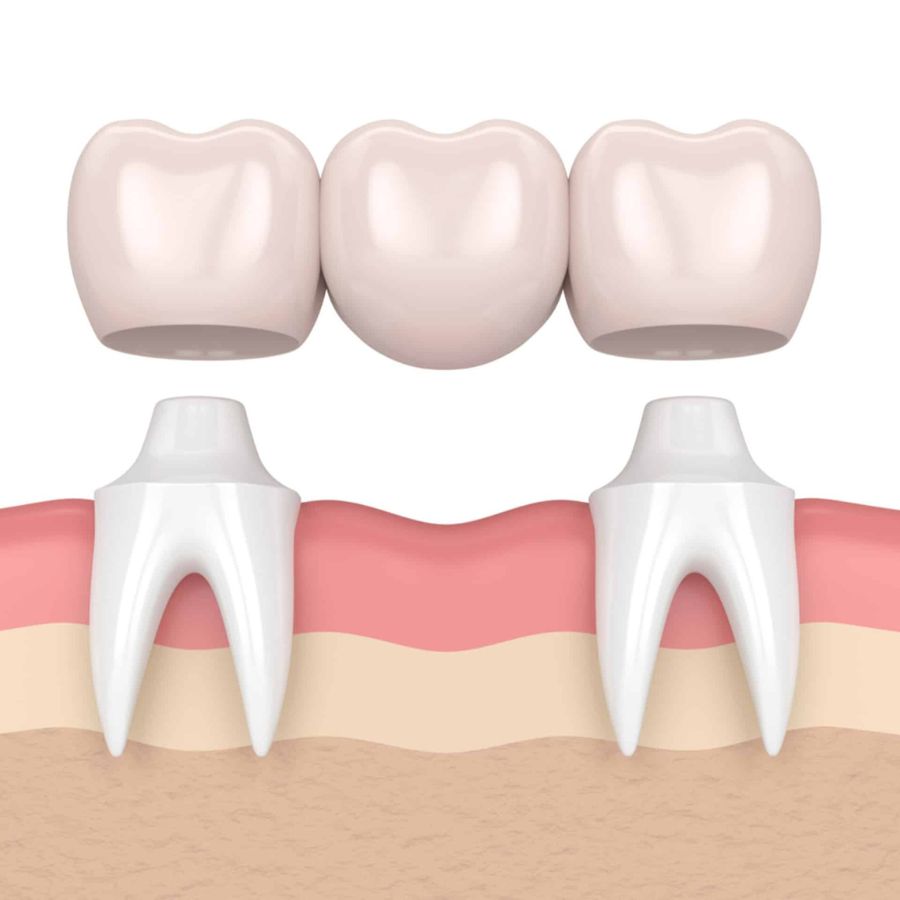



















Dental Bridge Turkey: Cost, Reviews, Types, And Advantages
Missing teeth can seriously affect your smile and your ability to chew properly—dental bridges offer an effective means of restoring both. They’re particularly popular in Turkey as they can often be less expensive compared to similar procedures performed elsewhere in the world while still meeting top quality thanks to skilled dentists and top-tier equipment. Dental bridge costs can vary based on factors such as the type of bridge chosen and the complexity of the procedure. Dental bridge services are widely available and accessible in Turkey, often completed in fewer visits without requiring surgery. Depending on what best meets your needs, you can choose between traditional bridges or implant-supported ones. Do you want to learn more about the expenses, various forms, and advantages of having a dental bridge in Turkey? Keep reading!

What Are Dental Bridges?
Dental bridges offer an effective means of replacing lost teeth for those unable to opt for turkey teeth implants. The dental bridge procedure involves several steps, including oral exams, X-rays, and cleanings. Dental insurance plans may partially cover the cost of the procedure, but patients should also consider additional expenses. Before placing a bridge, healthy teeth adjacent to the gap must first be slightly trimmed down before they’re covered in porcelain and used as supports for your bridge – this ensures it can safely fill in missing spaces to help restore both the form and function of your smile. In cases with several missing teeth missing altogether, dental implants might provide added support, helping ensure the long-term stability of your dental bridge.
How Much Does A Dental Bridge Cost Turkey?
Prices of dental bridges in Turkey depend upon various factors influencing the overall dental bridges cost, such as the type of bridge, the materials used, and geographical location. For instance, a 3 or 4 teeth bridge cost is less than a 6 tooth bridge cost. Three-tooth metal-supported bridges range between 400 to 450 Euros, while zirconium supported bridges can cost anywhere between 520 and 580 Euros. To get a clearer idea of your treatment costs and options, contact Teeth Implants Turkey directly, and we’ll give you details based on your unique situation.

What Are The Different Types Of Dental Bridges?
Traditional Dental Bridges:
Conventional dental bridges are among the most often used methods to repair lost teeth. These bridges close the gap by using dental crowns that adhere to the healthy teeth next to a missing tooth. This kind of bridge is best if you have natural teeth on both sides of the gap. One great thing about conventional bridges is how well they blend in with your natural teeth. They are also sufficiently robust to replace molars. However, the downside is that the healthy teeth supporting the bridge need to be cut and reduced, so they’ll need to be protected with crowns.
Zirconium Supported Dental Bridge:
A zirconium-supported dental bridge is based on zirconium instead of metal. Zirconium is white and can look like real teeth. It won’t alter the flavor in your mouth, induce allergic responses, or damage your gums. Moreover, the smooth surface of these teeth hinders plaque development. There are two kinds of zirconium bridges: transparent and solid. Front teeth are made of the transparent kind as it looks fantastic; the solid variant is stronger and is typically used for bigger tooth gaps or for individuals who grind their teeth.
Metal-Supported Dental Bridge:
A metal-supported dental bridge supports porcelain crowns with a metal foundation, which is often constructed of chrome-nickel or gold. Even though they are sturdy, these bridges aren’t recommended for front teeth since light cannot pass through them. Instead, we usually use them for rear teeth, where strength counts more than beauty. For individuals who are sensitive to nickel, we may utilize gold, which is exceedingly biocompatible and does not cause gum problems or allergies.
Cantilever Bridges:
One major distinction between cantilever bridges and traditional ones lies in their holding mechanism – one cantilever bridge is supported by only one tooth. When just one natural tooth is next to the gap, this is perfect. The bridge is fixed onto that one tooth, offering a straightforward and efficient way to restore lost teeth.
Maryland Bridges (resin-bonded Bridges):
Maryland dental bridges are a common choice for repairing lost front teeth. Instead of crowns, the replacement tooth is anchored by metal bands that are linked to the surrounding teeth. It works well for the front teeth, but since it is not as strong as conventional bridges, it is often not recommended for the rear teeth, which perform the heavy lifting when you eat. Even for front teeth, Maryland bridges are not as long-lasting, which is why we typically use them in more specialized circumstances.
Implant-supported Bridges:
A dental implant-supported bridge can be best for replacing multiple teeth – traditional bridges depend on nearby teeth for support, while in this case, implants offer a solid foundation that can last years of use. Dental implants involve a surgical process that offers benefits and long-term value to the jaw bone structure, whereas dental bridges are more accessible and require less time to implement but do not prevent jawbone deterioration. One major advantage of choosing an implant bridge over other solutions for missing teeth is that it does not need to alter healthy teeth in any way; no filling down of healthy tooth structure is needed! Therefore, this solution can also be suitable if surrounding teeth don’t offer enough support or the gap is too wide to use regular bridges.

Advantages Of Dental Bridges:
- Dental bridges repair the gaps caused by lost teeth, therefore restoring your smile and confidence.
- Dental bridges are an effective solution to replace missing teeth, restoring both the appearance and function of the mouth.
- When missing teeth are filled, eating and speaking are both made considerably easier.
- Filling the vacant gap helps a bridge prevent adjacent teeth from migrating out of alignment.
- While missing teeth may make your face seem sunken, a bridge can prevent your jawline and cheekbones from sinking too much.
- Getting a dental bridge is a faster way to replace lost teeth than getting implants.
- Dental bridges, particularly when done in Turkey, can save you a lot of money when compared to alternative treatment options.
How Long Should I Stay In Turkey For A Dental Bridge?
Timeline For Traditional Dental Bridge
Plan for at least a five to seven-day trip if you want a traditional dental bridge, as the process involves three visits: one to prepare your teeth, one for fittings, and one visit for the actual placement of the bridge itself. Tooth extractions may be necessary before placing a dental bridge, and the average costs associated with tooth extractions should be considered as part of the overall treatment expenses. At these appointments, your dentist will prepare the surface teeth by taking precise impressions, preparing any needed restoration work, and ensuring everything fits when attaching the new bridge.
Implant Supported Bridges
Implant-supported bridges involve more planning. You will first require five to seven days’ stay in Turkey for your initial implant surgery; you then wait three to six months until the implants fuse with your jawbone; once complete, return for final bridge placement, which again requires approximately five to seven days for adjustments and fitting.
How Long Does A Dental Bridge Last?
Though dental bridges typically last five to 15 years with proper care, their longevity will ultimately depend on you and how well you take care of them.
What Are The Aftercare Practices For Maintaining A Dental Bridge?
- At least three times a day, brush your teeth, focusing on the region around the bridge.
- Floss under the bridge twice every day with a floss threader or specialized floss.
- See your dentist every six months for check-ups and cleanings.
- Don’t eat anything hard or sticky because it might damage the bridge.
- To lower your risk of decay, eat more of foods high in fiber and cut out on starchy or sugary products.
Start Creating Your Treatment Plan!
You can contact us by filling out the pre-request form.


